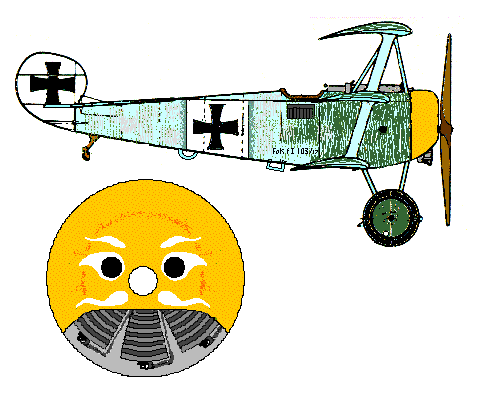 (Click image to enlarge) |
The cowl on a Fokker Triplane featured two small holes just above the center hole for the propeller and a large open area at the bottom. The Cowl on the Vß prototype feature a slightly larger center hole for the prop then the later production models. Even without Voß' art work, the Dr1 appears to have a face. Most likely the cowling on Voß plane came from the factory in "Fokker Olive". Some sources suggest that Voß may have painted the cowling chromgelb (chrome-yellow) to match his Jasta's colors. Over the base color, Voß added eyes, eybrows and "the Kaiser Mustashe". Some believe the face is similar to the Japanese Kites that were popular in Voß' home town of Krefeld, other sources say it was the Kaiser's portrait. It may have been both or niether. When you consider Voß had painted an Eastern symbol of good fortune (the swastika) on his Albatros DIII, then the possibility that this face was a Japanese Kite becomes feasible, especially if the particular face represent good fortune. Rather or not it was the Kaiser's portrait becomes almost moot. The little touch personalized Voß' airplane and shows the uncanny sense of humor this pilot possesed. Few British pilots would appreciate this sense of humor, for those who were close enough to see this face were close enough to be shot down. |
|
Werner Voß and his portrait of Kaiser Wilhelm II. In this photo it appears that the entire front of the plane to include the fuselage surface under the wings is still in the original factory olive color. Note the LeRhône Engine |
 |